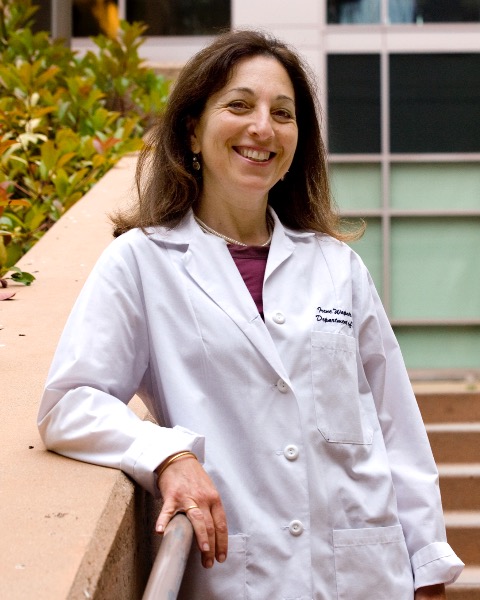Breast
E81: Can Completion Axillary Lymph Node Dissection be Omitted after Neoadjuvant Endocrine Therapy?

Irene Wapnir, MD
Professor of Surgery
Stanford University Medical Center
Stanford, CA, United States- AS
Amanda Sutherland Beck, n/a
Surgical Fellow
Stanford University
Sunnyvale, California, United States - MT
Megan Troxell, n/a
Professor
Stanford University, United States - JT
Jacqueline Tsai, n/a
Clinical Associate Professor
Stanford University, United States
ePoster Abstract Author(s)
Author(s)
Neoadjuvant endocrine therapy (NET) for the treatment of breast cancer remains a viable option to downstage hormone receptor (HR)- positive tumors. While sentinel node biopsy after neoadjuvant chemotherapy is used, this approach has not been the defined for patients receiving NET. This study reviews the axillary management in patients who received NET.
Methods:
A retrospective chart review of patients diagnosed with HR-positive/ HER2-negative breast cancer at our institution was performed. Patients diagnosed between 2012 and 2022 were included if they received NET for at least 4 weeks prior to surgical intervention. Statistical analysis was performed using GraphPad Prism software.
Results:
52 patients, 23 node negative with average age 68.7 years and 29 node positive with average age 64.1 years were identified. NET (tamoxifen, aromatase inhibitor or combination therapy with CDK 4/6 inhibitor) was given for an average of 9.2 months (1.5 - 37 months). Median follow up was 2.9 years (1 month-8 years). Mastectomy was performed in 10 women while 91.3% of the 23 node negative and 72.4% of node positive patients received lumpectomy. Seven of 52 patients underwent no axillary staging, 55.8% (29/52) received sentinel lymph node biopsy (SLNB) alone, 19% (10/52) SLNB plus completion axillary lymph node dissection (SLNB/ALND) and 11% (6/52) ALND. 45 patients underwent nodal staging procedures. Among the 29 with node positive disease, SLNB alone was performed on 13 (44.8%) with an average of 2 positive nodes (1-7). Ten patients underwent SLNB/ALND with an average of 2 positive sentinel nodes (1-4). Four of the latter patients had additional positive non-sentinel nodes, totaling to an average of 3.6 positive nodes (1-10). By comparison, the average positive nodes for ALND only was 8.3 (3-18).
Conclusions:
Lymphatic mapping and SLNB are a seemingly appropriate approach for nodal staging in patients receiving NET. Non-sentinel positive nodes were present in four of 10 patients who underwent SLNB/ALND. Further criteria is required to guide the management of patients in this setting.
Learning Objectives:
- Describe indications for axillary staging after NET
- Describe rates of non-sentinel node positivity in patients with positive SLNB
- Describe rates of nodal positivity after NET
